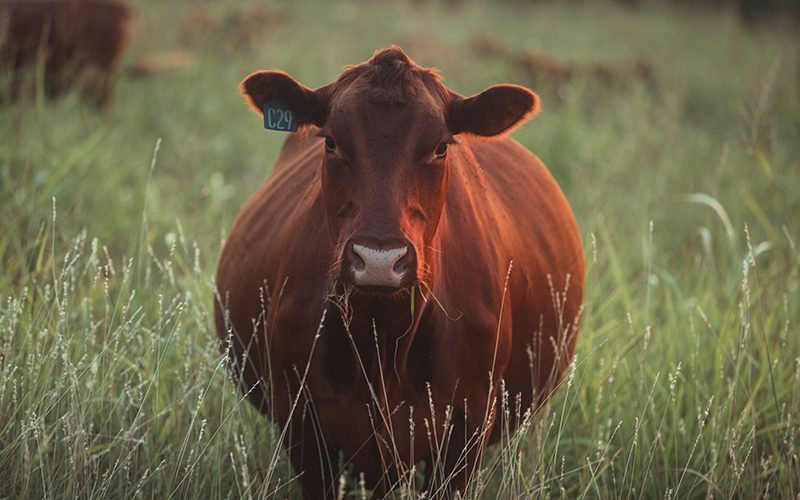There are more benefits to Something Better Foods’ products than just great taste and a healthy meat alternative. Current research is showing that switching to a plant-based diet may be the best way to protect people AND the environment. The overconsumption of meat in underserved communities creates a high demand for animal products whose production is one of the leading causes of the environmental crisis. To begin tackling the environmental crisis, we need to understand the problems and issues that lie at the root of the crisis.The environmental crisis will not be solved if we do nothing to address the institutional and systemic racism that has created the food deserts which foster and promote the heavy consumption of meat.
In our mission to democratize the access of plant-protein, we recognize that minority groups in underserved communities consume more meat than any other group and this is largely caused by their lack of access to plant-based options. Below, we analyze how switching to a plant-based diet through Something Better Foods’ products can have positive effects on people and local and global environments.
GLOBAL IMPACT OF MEAT CONSUMPTION
It’s no secret that producing meat is very water intensive – to produce one pound of beef takes nearly 1800 gallons of water (FoodTank.com, 2013). In addition to its high water use, the production of meat and animal products contributes to more than 14.5% of greenhouse gas emissions – more than emissions from powering the world’s road vehicles, trains, ships, and airplanes combined (Bailey, Froggatt, and Wellesley, 2014). Greenhouse gases are the cause of climate change, and climate change makes the already difficult issue of feeding the global population even more difficult.
In contrast, more people eating a plant-based diet would save water, minimize the use of agricultural land, and reduce our current greenhouse gas emissions. In comparison to the nearly 1800 gallons of water it takes to produce a pound of beef, producing a pound of soybeans, a common ingredient in many meat alternatives and key ingredient in our Better Chew proteins, takes only 216 gallons of water (FoodTank.com, 2013). A study of global water consumption and diet trends found that reducing meat consumption to 0% globally could reduce agricultural water use by as much 21% (Jalava et al., 2014, p. 74016). In terms of land use, it is estimated that a shift away from animal-based products could add up to 49% of the global food supply without expanding croplands (Jalava et al., 2014, p. 74016). Additionally, climate change is slowed by people switching to plant-based diets. A vegan’s diet produces 1.5 tons less greenhouse gas emissions than a meat eater’s diet each year (Fernandez Rysavy, n.d.).
IMPACTS OF MEAT PACKING INDUSTRY ON EMPLOYEES
The production of meat’s impact on communities can be detrimental as well. More than 60% of the people employed in the animal slaughtering industry are Black or Latino. According to the Bureau of Labor statistics, meat packing is considered one of the most hazardous industries in the United States (McLaughlin, Pendergrass, 1988). Common injuries include knife cuts, strains, and sprains, though more serious injuries may occur while workers attempt to hold still a moving animal (McLaughlin, Pendergrass, 1988). Due to the overrepresentation of Black and Latinx people in this industry, these communities are disproportionately affected by these workplace hazards.
LOCAL ENVIRONMENTAL IMPACTS OF MEAT PRODUCTION
Additionally, the meat packing industry is a significant source of environmental pollution. The most notorious of these is the Contained Animal Feeding Operations (CAFOs). In CAFOs, large numbers of animals are kept in confined spaces, and their waste is drained and stored in open air pits. When the waste is partially decomposed, it is released into the surrounding environment, which means it can spread into and pollute the air and water supply (Mirabelli et al., 2006, p. 593). CAFO waste is likely to contain pathogens, ammonia, cleaning agents, and hormones, all of which can be dangerous to people exposed to this pollution (cite Sierra Club). CAFOs and their waste pits have to go somewhere, and are often placed in underserved communities. As such, CAFOS are more likely to be found near communities of color and impoverished communities. Those exposed to these waste pits report a number of health problems, from burning eyes, to trouble breathing, to higher rates of depression and other mental health issues (Mirabelli et al., 2006, p. 593).
WORKING FOR THE BETTER
We want to push for something better. Something Better Foods’ plant-based products are a much cleaner alternative than meat in terms of production. There is no need for CAFO waste pits. Additionally, we believe that employees at Something Better Foods should have safe, well-paying jobs, as opposed to the hazards faced by meat packing employees. We want team members at Something Better Foods to have not just fair-wage jobs, but great-paying jobs that have a positive impact on the local economy and community. Something Better Foods especially wants to improve the lives of underserved communities with health and economic opportunities. We know our products are a proven success with minority groups, specifically the African American and Latin communities who consume more meat than other ethnic groups in the U.S. On these premises, we work to forward a movement towards healthier people, and healthier local and global environments.










